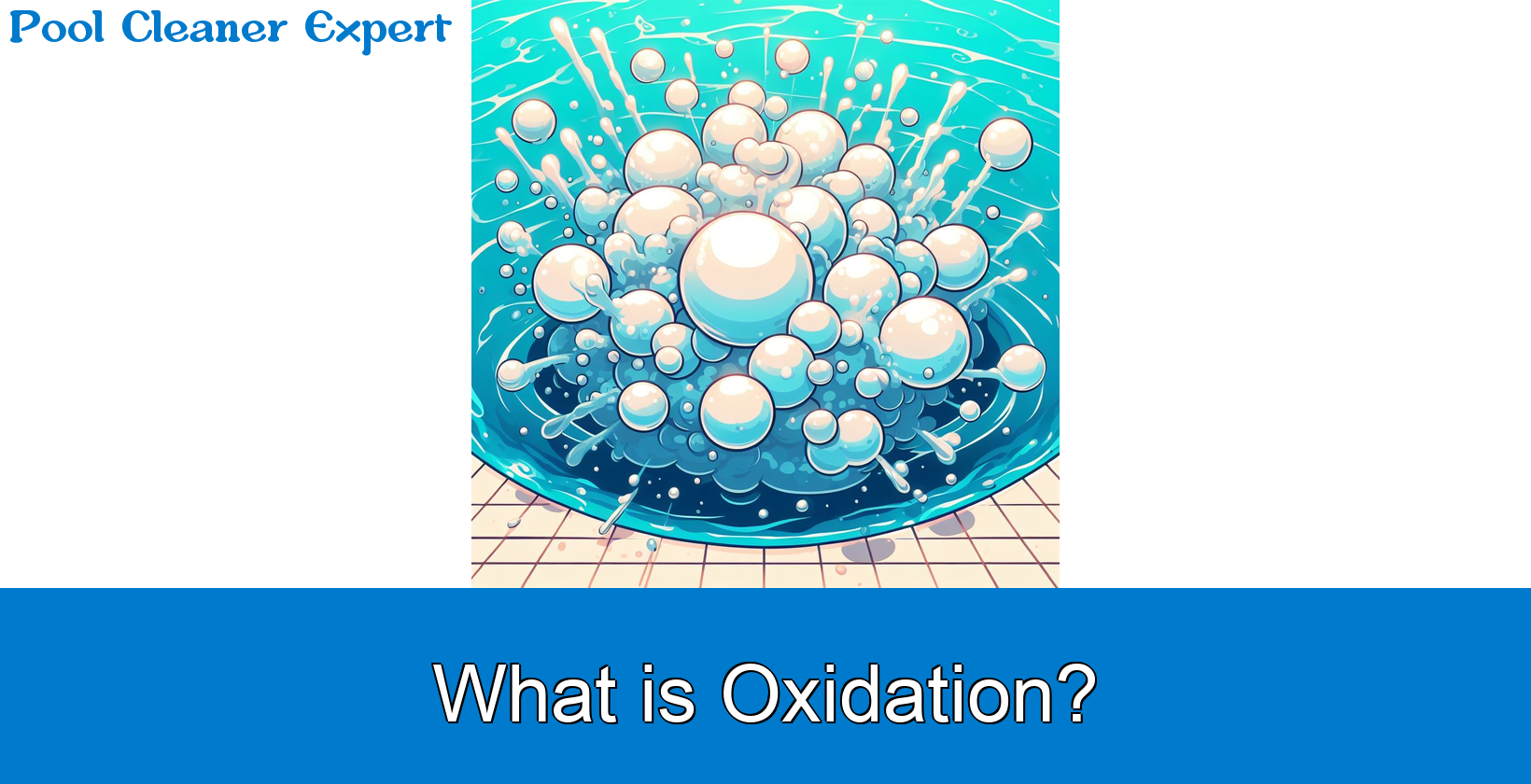Oxidation is a chemical process used in swimming pools to remove organic waste and kill bacteria. This process involves the use of oxidizers, which can include substances like chlorine, bromine, ozone, monopersulfate, hydrogen peroxide, and other sanitizers or disinfectants. Oxidation is crucial in maintaining the cleanliness and safety of the water, as it helps to eliminate harmful organisms and oxidize swimmer waste such as sweat, urine, saliva, and other bodily fluids. It also helps to control taste and odor, remove color, and make the water pleasant for swimming.
Contents
Why is Oxidation Important?
Oxidation is important because it is used in swimming pools to remove organic waste and kill bacteria. Approximately 85% of the chlorine added to pool water is used for oxidation, not for killing organisms. It’s crucial to understand that eliminating swimmer contamination and killing organisms are two separate functions. Some sanitizers and disinfectants are oxidizers, while others are not. For instance, chlorine is both a disinfectant and an oxidizer, while bromine is only a disinfectant. Therefore, a separate oxidizer is needed for a bromine pool or spa to oxidize substances that bromine cannot.
What is the importance of oxidizer products?
Oxidizer products are important as they are used in swimming pools to remove organic waste and kill bacteria. They play a crucial role in eliminating swimmer contamination and oxidizing substances that certain disinfectants cannot. For instance, chlorine, which is both a disinfectant and an oxidizer, is used to oxidize swimmer waste and organics like sweat, urine, and cosmetics. Oxidizers also react with DPD reagent, a substance used to test for free available chlorine in water. Furthermore, oxidizers are involved in the Advanced Oxidation Process (AOP), which enhances the decomposition of ozone into hydroxyl radicals, aiming to maximize the production of these radicals.
Are All Oxidizers Disinfectants and Sanitizers?
No, not all chemical products sold as oxidizers are disinfectants and sanitizers. For instance, potassium peroxymonosulfate (MPS or monopersulfate) can oxidize swimmer waste but it doesn’t kill bacteria or algae. While a good disinfectant or sanitizer should also be an oxidizer, not all oxidizers have disinfecting or sanitizing properties. Some oxidizers, like chlorine, serve as both disinfectants and sanitizers, but others, like bromine, only have disinfecting properties and require a separate oxidizer.
What is the Purpose of Disinfection and Oxidation?
The purpose of disinfection is to eliminate harmful organisms like bacteria, parasites, viruses, algae, mold, mildew, and spores. Oxidation, on the other hand, aims to oxidize swimmer waste such as sweat, urine, saliva, and other bodily fluids. Both processes help to control taste and odor, remove color, and make the water pleasant for swimming. They should be achieved without leaving any harmful by-products and at a reasonable cost.
What are products that oxidize and disinfect?
Products that oxidize and disinfect include chlorine, bromine, ozone, monopersulfate, hydrogen peroxide, and other sanitizers or disinfectants. Additionally, the Advanced Oxidation Process (AOP) system, which combines ozone and UV, can also oxidize and disinfect. Chlorine and bromine are frequently used due to their high reactivity and residual properties, ensuring efficient and continuous control of microorganisms. Ozone is a highly reactive form of oxygen that is one of the strongest known oxidizers and can destroy organisms by tearing open the cell wall. Monopersulfate can oxidize swimmer waste but does not kill bacteria or algae. Hydrogen peroxide is often used in combination with other disinfectants like Biguanicides. The Advanced Oxidation Process (AOP) system maximizes disinfection, water clarity, and chloramine removal by dissolving ozone gas in the water and then transferring the ozonated water through a UV lamp.
What is Potassium Monopersulfate?
Potassium monopersulfate is a dry, granular, non-chlorine oxidizer, also known as monopersulfate. It’s typically used as a weekly oxidizing shock treatment. Potassium monopersulfate is an oxidizing chemical used to sanitize water. It is often used in superchlorination products and can catalyze bromine. However, while it can oxidize swimmer waste, it does not kill bacteria or algae. It is also used in the activation of sodium bromide to provide hypobromous acid to pools and spas. Monopersulfate, also known as potassium monopersulfate or potassium peroxymonosulfate, is an oxidizing chemical used to sanitize water. It is used to supersanitize without using chlorine and also catalyzes bromine. However, while it can oxidize swimmer waste, it does not kill bacteria or algae. It is often used in superchlorination products and is sometimes found in small quantities in bromine tablets. It is also used in the two-part system of providing hypobromous acid to pools and spas, a method suitable for small volumes of water.
How Does Potassium Monopersulfate Work?
As an oxidizer, monopersulfate reacts with contaminants, preventing the formation of combined chlorine (CC). It’s recommended to use one pound (0.45 kg) per 10,000 gallons (38,000 L) of water, based on a 42.8% active strength. Once dissolved, it’s safe for bathers to enter the water. However, it can reduce the water’s pH. Some versions contain a less active ingredient for a more neutral pH.
What Does Potassium Monopersulfate Oxidize?
Monopersulfate oxidizes both inorganic and organic contaminants by adding oxygen. This process doesn’t form chlorinated disinfection byproducts. The oxidation increases the contaminants’ negative charge, aiding their removal by the filter.
Does Potassium Monopersulfate Affect Chlorine Levels?
Monopersulfate doesn’t alter free chlorine levels. However, it can interfere with combined chlorine readings during a DPD test. A suitable test kit is needed to neutralize this interference. Monopersulfate is classified as a NFPA Class 1 oxidizer, meaning it doesn’t significantly increase the burning rate of combustible materials it contacts.
